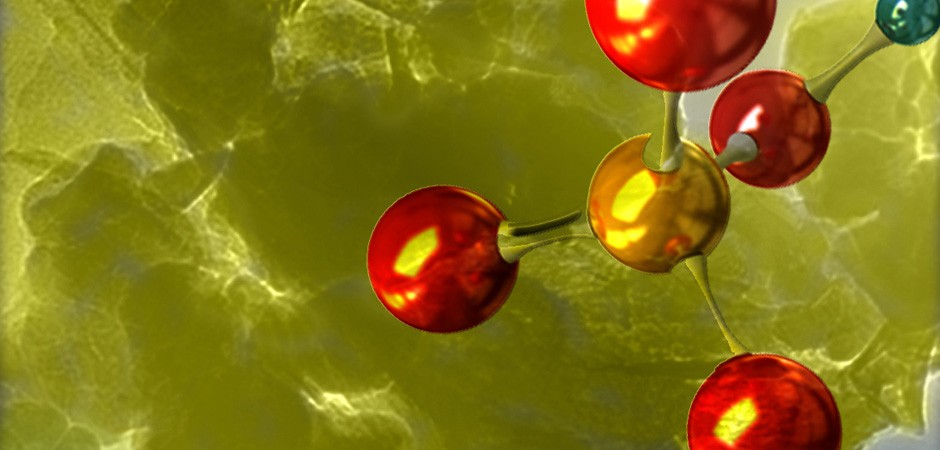- Details
- Published on 01 January 2011
Tổng hợp composite SnO2/M (M=graphene oxide, g-C3N4) dùng làm vật liệu anốt cho pin sạc liti
Synthesis of SnO2/M (M = graphene oxide and g-C3N4) composites as Lithium-ion battery anode materials
Nguyễn Thị Kim Chung1, Trương Thanh Tâm1, Cao Văn Hoàng1, Nguyễn Văn Kim1, Võ Viễn1,2 This email address is being protected from spambots. You need JavaScript enabled to view it.
1Khoa Hóa, Trường Đại học Quy Nhơn
2Viện Nghiên cứu ứng dụng khoa học và công nghệ, Trường Đại học Quy Nhơn, 170 An Dương Vương, Quy Nhơn, Bình Định
ABSTRACT
SnO2/M (M = graphen oxit (GO), g-C3N4) composites were hydrothermally synthesized using sodium citrate as a structure directing agent. The obtained composites were characterized by X-Ray diffraction, scanning electron microscopy, infrared spectrum and thermogravimetric analysis. The results showed that the composites contain SnO2 nanoparticle grown on the GO and g-C3N4, which exhibited a good performance in lithium storage.
Keywords: SnO2, graphen oxit, g-C3N4, lithium ion battery
- Details
- Published on 01 January 2011
Synthesis of microporous organic polymers from 4,4-Bis chloremetyl-1,1 Biphenyl and Dichloro-p-xylene
Tong Thi Thanh Huong This email address is being protected from spambots. You need JavaScript enabled to view it., Cong Ngoc Thang, Tran Ngoc Tuan, Nguyen Mai Ha, Vu Van Toan, Hoang Quoc Dzung
Faculty of Oil and Gas, Hanoi University of Mining and Geology, Duc Thang, Bac Tu Liem, Hanoi.
ABSTRACT
This paper reports the preparation and characterization of microporous organic polymer (MOPs) synthesized from 4,4-Bis (chlorometyl)-1,1 Biphenyl and Dichloro-p-xylene with different ratio of these compounds, through the Friedel-Craft alkylation process promoted by anhydrous FeCl3. The MOPs were characterized by FT-IR, SEM, TGA, and BET. These microporous organic polymers possessed high BET specific surface areas. SBET increased lightly from 1476.36 m2/g to 1663.02 m2/g with the increasing content of dichloro-p-xylene, and the pore width average from 55.6 – 44.5 Å. The MOPs are stable at around 400oC.
Keywords: Microporous Organic Polymers, BCMBP, Friedel-Craft alkylation
- Details
- Published on 01 January 2011
Cu-MOF-74 as a recycable catalyst for o-acetyl subsituted phenol ester synthesis via direct oxidative esterification of 2-(benzo[d]thiazol-2-yl)phenol with benzyl alcohol
Hoang Thi Thanh1, Lieu Ngoc Thien1, Huynh Dac Hong Ngoc1, Dang Huynh Giao1,2, Phan Thanh Son Nam1This email address is being protected from spambots. You need JavaScript enabled to view it.
1Faculty of Chemical Engineering, Ho Chi Minh City University of Technology, VNU-HCM, Vietnam
2College of Engineering Technology, Can Tho University, Vietnam
ABSTRACT
A crystalline porous metal-organic framework Cu-MOF-74 (also known as Cu-CPO-27) was synthesized and characterized by several methods including PXRD, TGA, FT-IR, SEM, and nitrogen physisorption measurements. The Cu-MOF-74 was used as an efficient heterogeneous catalyst for the oxidative esterification of 2-(benzo[d]thiazol-2-yl)phenol with benzyl alcohol to form 2-(benzo[d]thiazol-2-yl)phenyl benzoate as desired product. The direct C–O coupling reaction could proceed readily, with more than 77 % reaction yield being achieved after 120 min at 100 oC in the presence of 5 mol% Cu-MOF-74 catalyst and tert-butyl hydroperoxide in decane as an oxidant. The Cu-MOF-74 exhibited higher activity than other MOFs and traditional homogeneous catalysts in the direct oxidative reaction. The Cu-MOF-74 could be recovered and reused three times without a significant degradation in catalytic activity and selectivity. To the best of our knowledge, this transformation using heterogeneous catalyst was not previously mentioned in the literature.
Keywords: Cu-MOF-74, benzyl alcohol, benzoate, 2-(benzo[d]thiazol-2-yl)phenol, ester.
- Details
- Published on 01 January 2011
 Volume 7, Issue 1, April 2018
Volume 7, Issue 1, April 2018
ISSN: 0866-7411
In this issue (21 articles)
Download Cover and Category
- Details
- Published on 01 January 2011
Hồ Sĩ ThoảngThis email address is being protected from spambots. You need JavaScript enabled to view it.
Viện Khoa học vật liệu ứng dụng, Viện Hàn lâm Khoa học và Công nghệ Việt Nam
ABSTRACT
Nowadays renewable fuels, mainly biofuels, are drawing the attention of scientific and technological communities. But first-generation biofuels, i.e. ethanol and biodiesel made from vegetable oils and animal fats, due to certain disadvantages, seem to be increasingly unattractive to governments as well as private investors. Recently, the research on direct conversion of biomass to fuels has been of particular interest. This is a very attractive research direction, because the successful conversion of practically any form of biomass into fuels and chemicals should be of global strategic importance in the foreseeable future. This review shows the results of recent studies obtained by various reseachers worldwide on the conversion of biomasses to “sustainable” biofuels, but the main attention is focused on the two-stage conversion of biomasses, especially on the second stage of catalytic hydrodeoxygenating intermediate products of first stage - fast pyrolysis.
Keywords: Biomass, Sustainable Biofuels, Fast Pyrolysis, Hydrodeoxygenation, Catalysts















